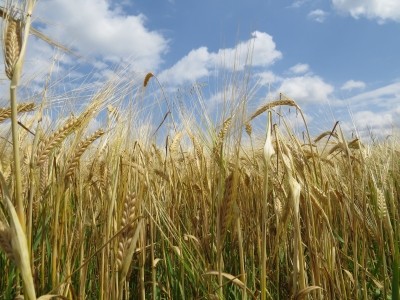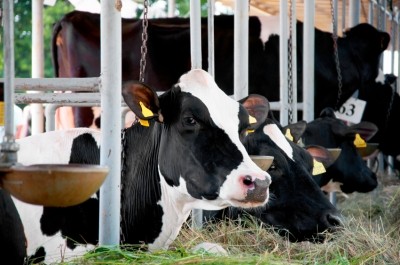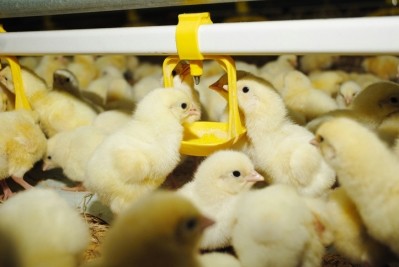Barley may outperform wheat as starter pig feed ingredient, says Canadian team
![[pic: (c) istock.com/tongchuwit]](/var/wrbm_gb_food_pharma/storage/images/_aliases/wrbm_large/9/9/7/0/470799-1-eng-GB/Barley-may-outperform-wheat-as-starter-pig-feed-ingredient-says-Canadian-team.jpg)
Writing in the journal, Animal Feed Science and Technology, the scientists said barley can also achieve equivalent or better growth performance for the young pigs.
“Dietary inclusion of barley grain to replace 650g wheat/kg in swine diet reduced energy digestibility, but did not reduce growth performance of weaned pigs.
Pigs fed LQ barley diet had greater feed intake, ADG and feed efficiency than pigs fed the wheat grain diet. Barley grain may replace wheat grain not only in diets for growing-finishing pig but also for starter pigs,” concluded the authors.
Barley versus wheat in starter diets
Wheat and barley are feed grains used as dietary sources of energy for swine in western Canada, Australia and northern Europe.
But inclusion of barley grain in starter pig diets is limited due to its high fiber content that is associated with lower nutrient digestibility and lower net energy (NE) value (Noblet et al., 1993 and Lynch et al., 2007), noted the authors.
The Alberta based researchers thus wanted to find out whether young pigs fed barley grain instead of wheat in diets formulated to equal NE value can maintain growth performance.
“Adverse agronomic conditions might turn an expected high quality (HQ) barley grain into low quality (LQ) barley with greater fiber content, lower density and thus lower DE and predicted NE value (Fairbairn et al., 1999 and Van Barneveld, 1999).
However, LQ barley may still be acceptable for swine feeding because even young pigs can compensate for low energy, barley-based diets by increasing feed intake (Beaulieu et al., 2006),” said the team.
The team noted that wheat grain has a greater NE value than barley (NRC, 2012); however, the greater digestible energy (DE) value of wheat than barley did not increase growth of pigs, found Lawrence, 1972 and Bowland, 1974.
The hypothesis for this study, said the Canadian team, was that wheat, HQ barley or LQ barley diets with or without NE correction would have similar nutrient digestibility and growth performance for starter pigs.
And they said the objectives were to determine nutrient digestibility, DE and calculated NE values of wheat, HQ and LQ barley diets, the growth performance of weaned pigs fed these diets and effects of NE correction of LQ barley diet on these variables.
Experiment details
Starting a one week post-weaning, 280 pigs were given one of five diets, said researchers. The pelleted feeds included HQ barley, LQ barley with a NE balancing agent, without one and with low NE. The last diet was a one made from wheat.
“Five diets were formulated as [MJ NE/kg; g standardized ileal digestible (SID) lysine/MJ NE]: 1) wheat (10.0, 1.07); 2) HQ barley (10.0, 1.06); 3) LQ barley without NE correction (9.76, 1.09); 4) LQ barley with NE correction (10.0, 1.06); and 5) LQ barley with low NE value (9.42, 1.12),” they said.
Pigs, feed given and remaining were weighed each week for 21 days, said researchers. Manure samples were collected on days 19 and 20.
Additionally, ADG, average daily feed intake (ADFI) and the feed to gain ratio (F:G) were calculated, they said.
Results
The apparent total tract digestibility coefficient (CATTD) for gross energy (GE) was larger for the diet made from wheat, said researchers. And, the CATTD of GE was less for the HQ barley diet than the LQ barley diet.
The LQ diet with low NE had a greater CATTD of GE than for the LQ diet without an NE correction, they said. And, the CATTD of crude protein was higher for the wheat diet than the barley diets, save the LQ diet with low NE.
“The DE and predicted diet NE value were greater for the wheat diet than barley diets except for the LQ barley diet with NE correction,” said researchers. “These energy values were lower for the HQ barley diet than for LQ barley diets and greater for the LQ barley diet with NE correction than LQ barley diets without NE correction or low NE.”
The ADFI, ADG and G:F for the wheat diet were similar to the HQ diet, they said. Both had lower responses than the LQ barley diets. However, the ADG of the HQ diet was similar to the LQ diets.
The NE correction did not influence the ADFI, ADG or G:F of the LQ diets, they added.
Final body weights were similar for pigs getting the wheat diet and the HQ barley diet, said researchers. Both were lower than that for pigs getting the LQ diet with NE correction.
“The present study indicated that high and low quality hulled barley can be fed to starter pigs to replace wheat grain and achieve equivalent or better growth performance in diets formulated to equal NE and SID Lysine,” they said.
The research was funded by the Alberta Crop Industry Development Fund with Alberta Pork, Danisco Animal Nutrition and the Canola Council of Canada.
Source: Animal Feed Science and Technology
Title: The effect of feeding barley on diet nutrient digestibility and growth performance of starter pigs
DOI: published online before print: 10.1016/j.anifeedsci.2015.10.014
Authors: Z. Nasir, L.F. Wang, M.G. Young, M.L. Swift, E. Beltranena, R.T. Zijlstra












